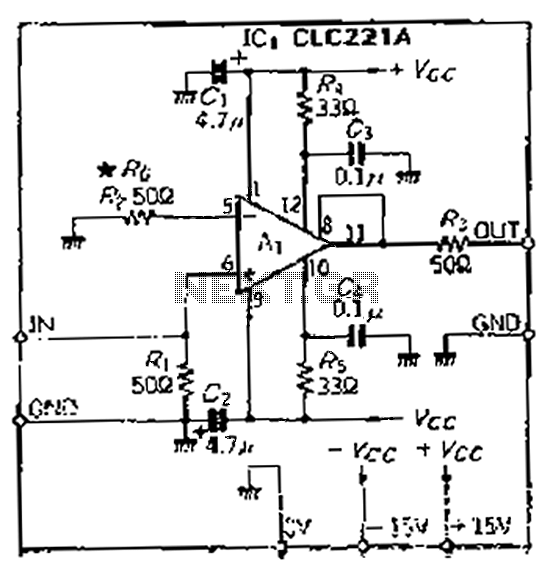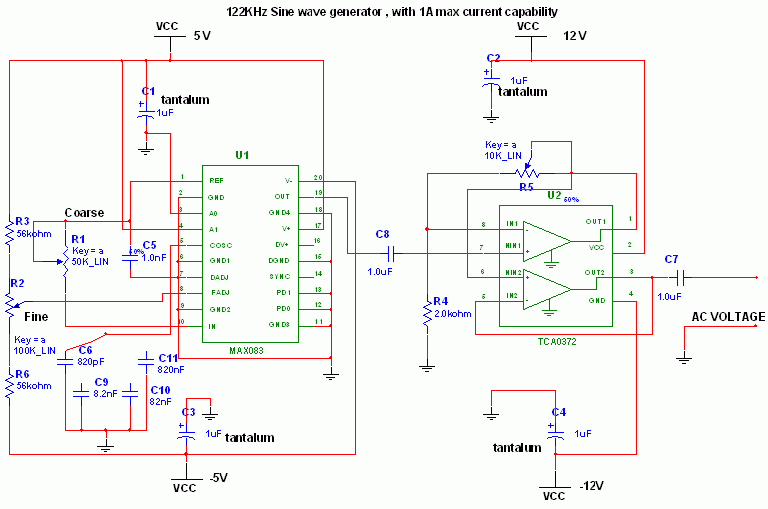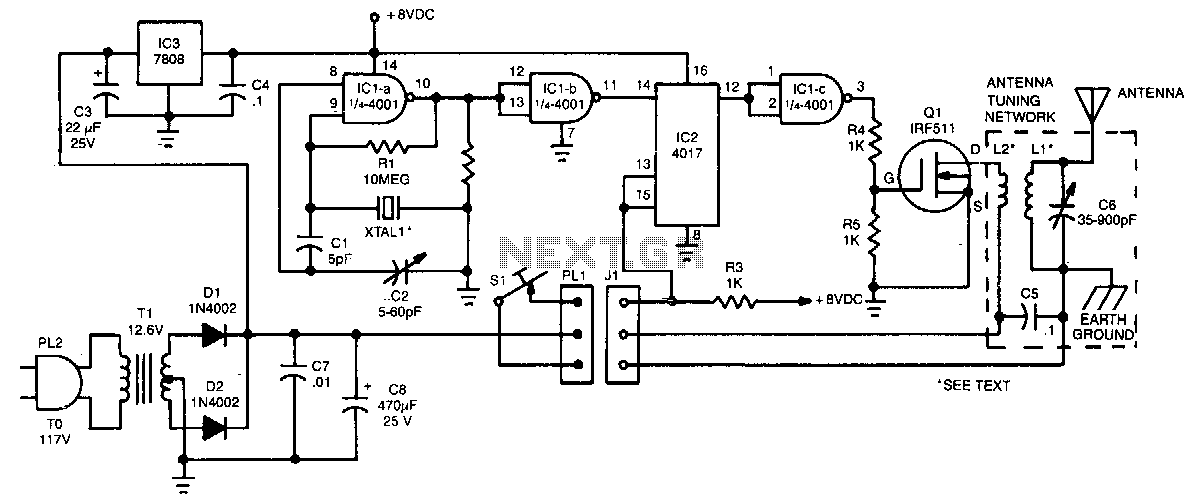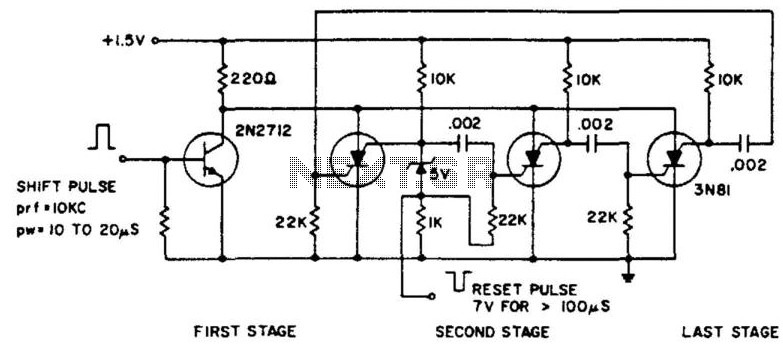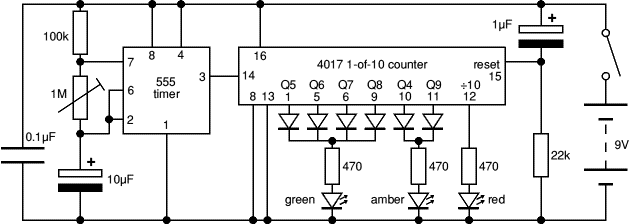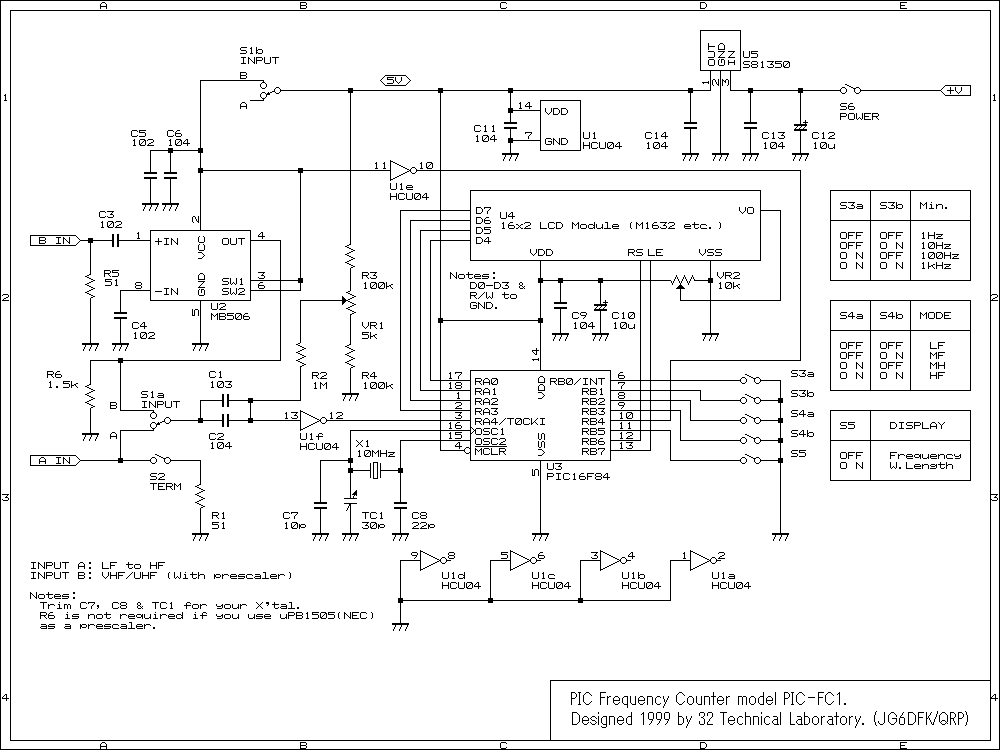
PIC16F84 IC For 40 MHZ/400 MHZ Frequency Counter
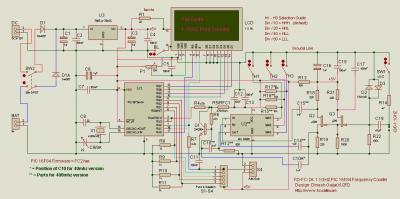
The following circuit illustrates a 40 MHz/400 MHz Frequency Counter Circuit Diagram. This circuit is based on the PIC16F84 IC. Features:
The frequency counter circuit operates within the range of 40 MHz to 400 MHz, utilizing the PIC16F84 microcontroller as its core component. The PIC16F84 is an 8-bit microcontroller from Microchip Technology, well-suited for applications requiring precise timing and counting capabilities.
In this circuit, the input signal is fed into the microcontroller through a suitable input pin. The microcontroller is programmed to count the number of signal cycles over a specified time interval, providing a digital representation of the frequency. The programming of the PIC16F84 involves configuring its timers and counters to accurately measure the input frequency.
The circuit typically includes additional components such as resistors, capacitors, and possibly a crystal oscillator to stabilize the timing functions of the microcontroller. The output of the frequency count can be displayed on a digital readout, such as a 7-segment display or an LCD, depending on the design requirements.
Power supply considerations are also important; the circuit may require a regulated voltage supply to ensure stable operation of the PIC16F84 and other components. Proper grounding and layout techniques should be employed to minimize noise and interference, which could affect the accuracy of frequency measurements.
Overall, this frequency counter circuit represents a practical application of microcontroller technology in measuring high-frequency signals, suitable for use in various electronic testing and measurement scenarios.The following circuit shows about 40 MHZ/400 MHZ Frequency Counter Circuit Diagram. This circuit based on the PIC16F84 IC. Features: with .. 🔗 External reference
The frequency counter circuit operates within the range of 40 MHz to 400 MHz, utilizing the PIC16F84 microcontroller as its core component. The PIC16F84 is an 8-bit microcontroller from Microchip Technology, well-suited for applications requiring precise timing and counting capabilities.
In this circuit, the input signal is fed into the microcontroller through a suitable input pin. The microcontroller is programmed to count the number of signal cycles over a specified time interval, providing a digital representation of the frequency. The programming of the PIC16F84 involves configuring its timers and counters to accurately measure the input frequency.
The circuit typically includes additional components such as resistors, capacitors, and possibly a crystal oscillator to stabilize the timing functions of the microcontroller. The output of the frequency count can be displayed on a digital readout, such as a 7-segment display or an LCD, depending on the design requirements.
Power supply considerations are also important; the circuit may require a regulated voltage supply to ensure stable operation of the PIC16F84 and other components. Proper grounding and layout techniques should be employed to minimize noise and interference, which could affect the accuracy of frequency measurements.
Overall, this frequency counter circuit represents a practical application of microcontroller technology in measuring high-frequency signals, suitable for use in various electronic testing and measurement scenarios.The following circuit shows about 40 MHZ/400 MHZ Frequency Counter Circuit Diagram. This circuit based on the PIC16F84 IC. Features: with .. 🔗 External reference
